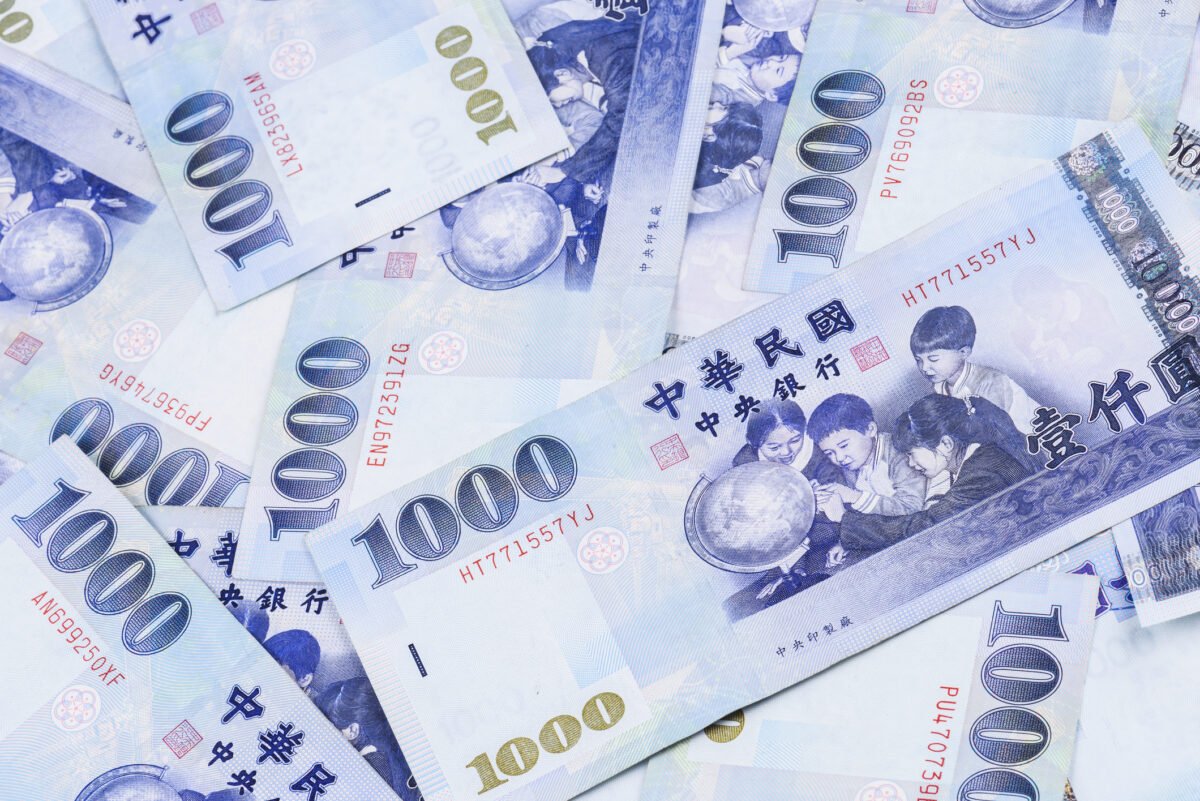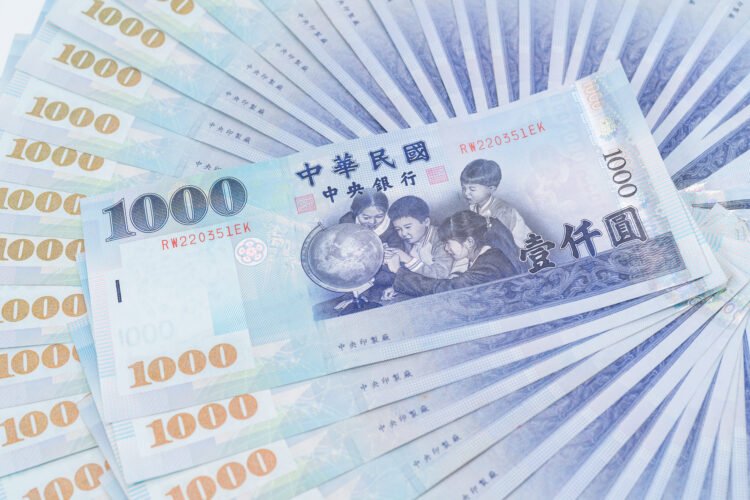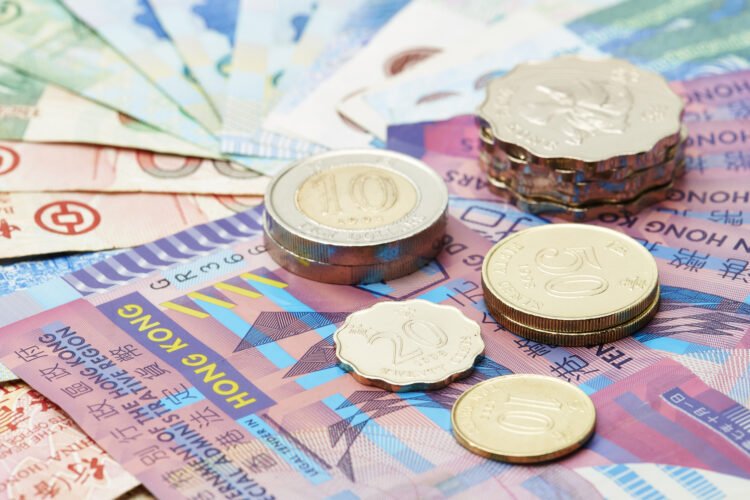
The New Taiwan Dollar is the official currency of Taiwan. It
was introduced in 1949, replacing the Old Taiwan dollar. The new dollar replaced the
old at a rate of 40,000 old dollars per one new dollar.
Old Taiwan dollar
The old Taiwan dollar was a currency used in Taiwan from 1946 until 1949. It was a
de facto currency that replaced the Japanese yen. However, its purchasing power
was lost. In the 1950s, the Taiwanese government issued a new currency, the New
Taiwan dollar, which helped regain some of the lost purchasing power.
The new Taiwan dollar was introduced in June 1949 to counter hyperinflation, which
was the result of the Chinese Civil War. At that time, the Nationalists were relocating
from mainland China to Taiwan.
The Old Taiwan dollar was a pegged currency, which meant it would exchange at
par to the yen. However, the Nationalists were defeated by the Communists, who
took over the government of Taiwan. Hence, the Bank of Taiwan issued a new
currency, the NT$.
The New Taiwan Dollar is currently the official currency of Taiwan. The banknotes
are circulating in Taiwan, as well as in Taiwanese territories.
The old Taiwan dollar was replaced by the New Taiwan dollar on 15 June 1949. At
that time, the exchange rate was 40,000 old dollars to one new dollar.
After the Communist victory in 1949, the government in Taiwan decided to phase
out the yen and introduce the new dollar. This was in response to the growing
inflation caused by the Communist government.
The ‘old’ Taiwan dollar was worthless in less than four years. However, the ‘new’
dollar was more than just a name. Rather, the ‘new’ dollar is also a symbol for the
economic progress of Taiwan.
As of June 2010, the current exchange rate for the Taiwanese dollar is 31.8 TWD per
1 USD. However, the real GDP growth has averaged 8 percent over the past three
decades. Compared to the oil shocks of the 1970s, inflation is at its highest level in
the world.
Since the New Taiwan Dollar is now the official currency of Taiwan, the government
has been more aggressive in distributing denominations to its citizens. These
include a NT$1000 and a NT$100 bill. Moreover, the banknotes have a see-through
window on the back, which shows a Taiwanese flag.
Currency exchange rates in Taiwan
In my humble opinion, the New Taiwanese dollar (NTD) is a better value than its
Chinese counterpart, despite the latter’s better growth prospects. While the TWD is
not quite as cheap as Hong Kong or Japan, the island does have a number of good
reasons to buy NT$ – including a stunningly picturesque coastline and a growing
selection of ‘homestays’. It’s also worth noting that Taiwan is a relatively small
country and the population is largely young and tech savvy, making it a great place
to pick up a bargain or two.
One of the best places to pick up a few NT$ is at an ATM machine. These can be
found at any major city or mall, although fees vary by bank. Several hotels will
accept traveler’s cheques and offer their own currency exchange services. This
makes it a good idea to do a little research before your trip, though. Likewise, do
your homework on any potential credit card fees, since you don’t want to get stung.
For a truly seamless foreign exchange experience, it pays to use a reputable
provider such as TorFX. They’ll let you know what’s what, and their rates are better
than those on offer at your local branch. They even offer free transfers over PS2000.
That’s not to mention their friendly customer service. If you’re planning on doing
business in Taiwan, you’ll likely need a good ol’ fashioned wallet sized NT$ for any
big ticket items. The best time to visit is during the weekdays, when many
companies aren’t scrambling to meet their payrolls. Getting there might also mean
less hassles, thanks to less traffic. Of course, you’ll probably have to leave Taiwan at
some point, so make sure you do your homework to avoid a headache down the
road.
Coins and notes minted by the Central Mint
The United States Mint is a bureau of the Department of the Treasury. It is the sole
producer of circulating coins and paper money in the United States. In addition to
producing currency, it is responsible for maintaining the mint’s assets and protecting
them from theft.
In addition to producing currency, the Mint also produces numismatic items such as
gold and silver bullion coins and coin sets. This includes coins that commemorate
particular events, places, people, and activities. Some of these coins are issued in
limited editions and aren’t circulated as normal currency.
According to the Royal Mint, there are about 29 billion coins and notes in circulation.
Of those, 99 percent is in the form of Federal Reserve notes, while the remainder is
in the form of national bank notes and silver certificates.
The amount of currency that is circulating is dependent on many factors, including
general economic conditions, seasonal factors, and institutional factors. For
instance, a prosperous year might lead to an increase in the demand for cash.
However, a hike in the bank rate might lead to a decrease in the demand for
currency.
In addition to currency, the Mint also produces commemorative coins. These
commemorative coins are minted from precious metals and have artistic value.
These coins are issued in limited quantities and aren’t circulated as a normal
currency.
Proof coins are minted using specially polished dies. They are then individually
handled and stored to prevent tarnishing. While they aren’t intended for circulation,
they are a great source of information about culture, history, and tradition.
The United States Mint has six major facilities. These include the Philadelphia and
Denver facilities that produce coins for circulation. Another facility, located in San
Francisco, focuses on special proof sets.
Besides minting currency, the Mint also oversees production facilities in Philadelphia
and West Point. Additionally, it provides measurement, metal content information,
and information on coin collecting.
There are two main types of coins: those that are circulated and those that are
issued for collectors. Coins that are circulating are primarily struck once. Those that
are issued for collectors are minted multiple times.
Scuba Diving spots in Taiwan
Taiwan has a wide variety of Scuba Diving spots. These include Orchid Island, Green
Island, Turtle Island, and Little Liuqiu. You can also go for snorkelling in Long Dong
Bay.
The diving season in Taiwan runs from July to October. Water temperatures are
between 26 and 27 degrees Fahrenheit during the summer. In the winter, water
temperatures dip to 20 degrees. However, there is a chance of typhoons, especially
in July and August.
Taiwan offers many opportunities for marine conservation and ecotourism. The
waters are home to over 1100 species of fish. Some of the more common creatures
you can see in the sea are whale sharks, groupers, barracudas, and batfish. Also,
there are a variety of nudibranchs in the waters.
There are many national parks to explore in Taiwan. Kenting National Park and
Green Island are two popular scuba diving spots. Kenting is an island in the south of
the island. It is a good place for beginner divers.
Green Island is a volcanic island in the southeast of Taiwan. It has a rugged and
windswept beauty. It is also the ideal spot for snorkelling. Aside from being a great
dive spot, this island is also home to a large number of tropical reefs.
Turtle Island is located in the north of Taiwan. It is a protected reef. As a result, you
can expect a large amount of marine life, including hawksbill turtles. Additionally,
there are hot springs beneath the surface.
Xiaoliuqiu is a small island located off the western side of Taiwan. It is one of the
best scuba diving spots in the country. During the summer season, you can expect
visibility between 5 and 10 meters.
In Taitung, the main dive sites are located along the northeast coast. Several ferries
connect the offshore islands. Most of these are located about an hour’s drive from
Taipei.
One of the most well-known scuba diving spots in Taiwan is Green Island. This island
is 33 km from the city of Taitung. With plenty of coral reefs and a warm climate, it is
the perfect diving spot.
For more information, visit the Taiwan Tourism Bureau website.





